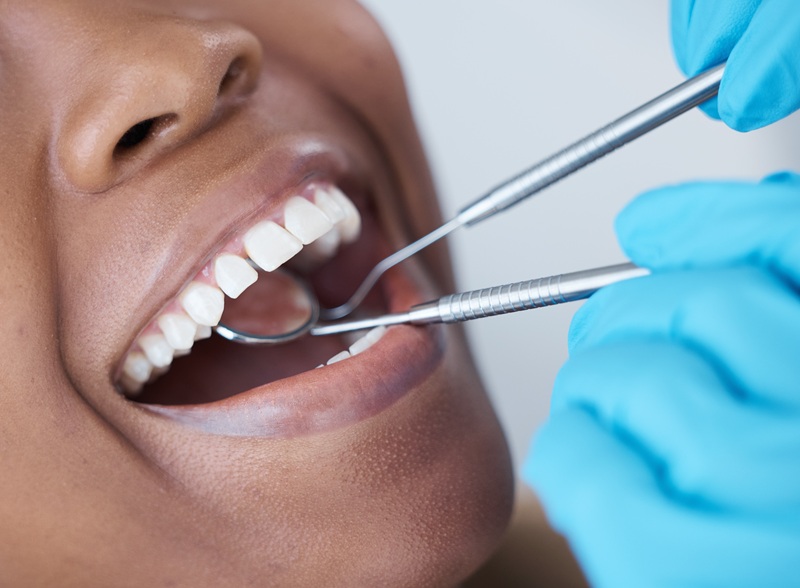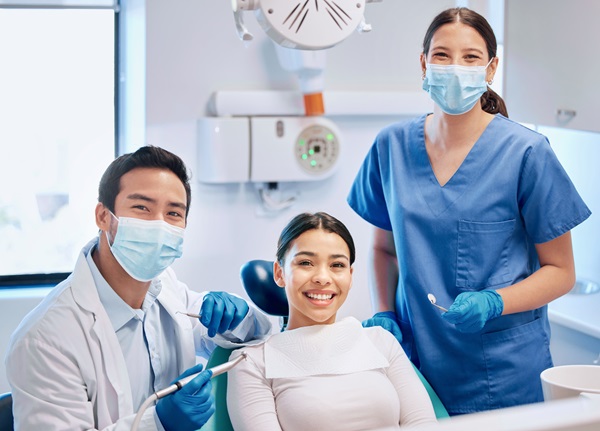Do Adult Teeth Shift?

Many people believe that once their adult teeth come in, they stay in the same place for life. But the truth is, even fully developed teeth can and do move! If you’ve noticed some changes in your bite, crowding in your smile, or teeth that seem “off” compared to before, you’re not imagining it.
So, do adult teeth shift? Yes, and we’ll explain why it does, what causes it, and what you can do to prevent or manage teeth shifting in adults.
Why Do Adult Teeth Shift?
As we all know, our teeth sit in our jawbone, and that jawbone is a living tissue that constantly changes throughout our lives. Because of that, it means that our teeth can, and often do, shift position, especially when certain conditions arise.
Imagine your teeth like books on a shelf. If you remove a book from the middle, the others may tip over and lean on one side. The same thing can happen in your mouth when something disrupts the natural spacing or support between your teeth.
What Causes Teeth to Shift in Adults?
So, what can cause our adult teeth to shift or move? There are actually various reasons why this happens. Let’s take a look at each one of them.
1. Tooth Loss
One of the biggest reasons adult teeth shift is missing teeth. If you lose a tooth and don’t replace it, eventually, the surrounding teeth can collapse into that space. Even the tooth opposite the gap (the one that used to bite against it) can start to grow too taller than it usually should be, as it has nothing to stop it.
This can lead to a domino effect, changing your entire bite and may likely result in future dental problems.
2. Orthodontic Treatment Without Retainers
Orthodontic treatments like braces and aligners work by applying pressure to move your teeth into better positions. That in itself is another proof that adult teeth can still shift and move. However, just because your treatment is done does not mean your teeth will stay there forever.
If you do not wear your retainers regularly or as advised by your dentist after your orthodontic treatment, your teeth may slowly shift back to where they were. In fact, it’s often recommended to wear retainers long term, sometimes even for life, to maintain the results.
3. Gum Disease and Bone Loss
Gum disease is another culprit as to why your teeth may move, as it can weaken the bone and tissues that support your teeth. Because it may no longer serve its purpose to support the teeth, your teeth can start to move or even loosen.
In severe cases, shifting teeth may also be a sign that you’re losing too much bone around the roots. Unfortunately, while our jawbone is a living tissue, it cannot regenerate unlike other animals that can repair it naturally. This is why treating gum disease early and maintaining good gum health is important to ensure that your teeth are supported well.
4. Ageing and Natural Changes
As you get older, your physical body changes as well as your dental health. Over time, the pressure from chewing, talking, and even nighttime teeth grinding (bruxism) can affect your bite and alignment. Because of that, your jaw may narrow slightly, and your teeth might crowd or shift forward.
Even without any specific dental issues, these slow changes can lead to noticeable differences in your smile.
What Can You Do to Prevent or Manage Teeth Shifting?
Now that we already discussed how our adult teeth may shift, here are some preventive measures to ensure your teeth stay in place for years to come.
1. Replace Missing Teeth
If you already have a missing tooth, replacing it with a dental implant, bridge, or partial denture can help stop the nearby teeth from moving into the gap.
2. Wear Your Retainer
This is especially important for patients who have orthodontic treatment. After your treatment, wearing a retainer helps “remind” your teeth where they’re meant to stay. It might seem inconvenient, but it’s one of the best ways to maintain your straight smile.
3. Maintain Gum Health
Healthy gums mean stronger support for your teeth. Brushing twice a day, using interdental brushes, and seeing your dentist regularly can go a long way in preventing gum disease and the shifting that can come with it.
If you already have gum disease, do not delay your treatment. The earlier it’s addressed, the better the outcome for your smile and overall oral health.
4. Get Regular Dental Check-Ups
Routine visits allow your dentist to spot changes in your bite or alignment before they become a bigger problem. They can also give you advice specific to your mouth, whether that means a night guard for grinding, gum therapy, or an orthodontic review.
Keep Your Smile in Line
Yes, adult teeth can shift and it’s more common than many people realise. But here’s the good news because the right care and early attention can prevent small changes from becoming big problems.
If you notice your bite feels different or your teeth are not sitting quite right anymore, do not neglect it. The sooner it’s checked, the easier it is to manage.
Prevent your adult teeth from shifting with our team at Whitehorse Dental, where we help you keep your teeth where they belong. Our friendly team is ready to support you with whatever your teeth need to make them healthy and aligned.
Book your appointment today and let’s keep your smile strong, stable, and looking its best.


